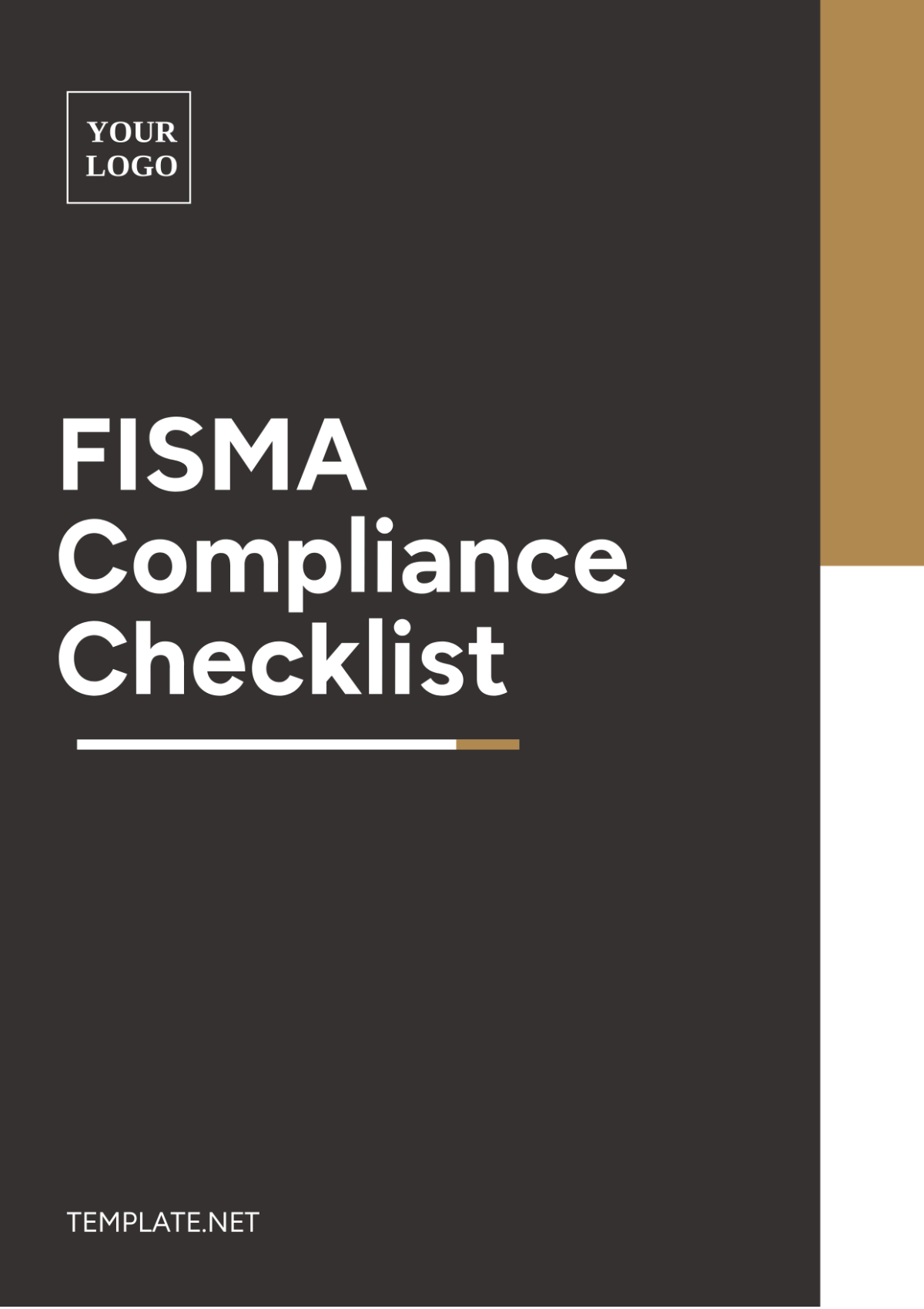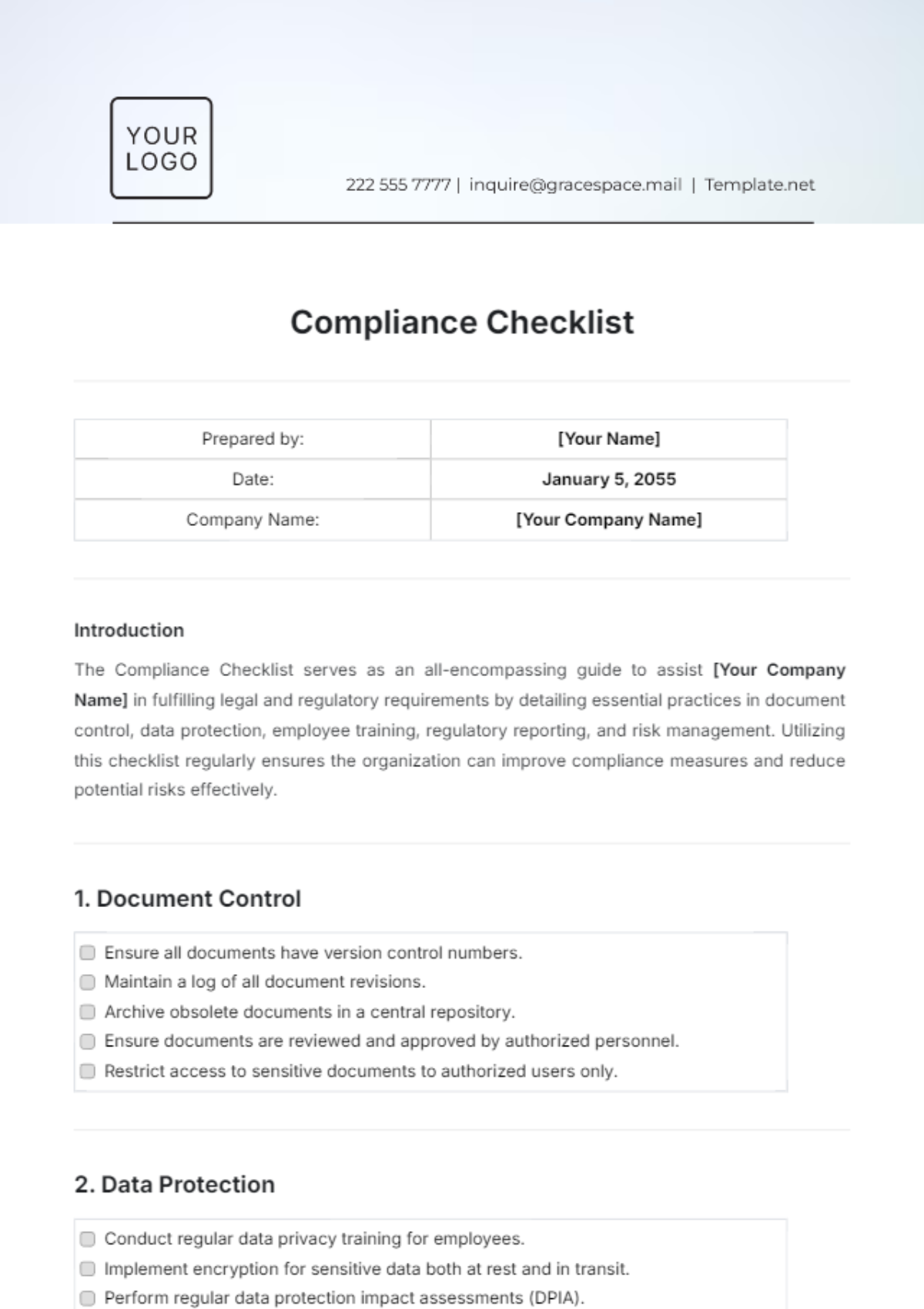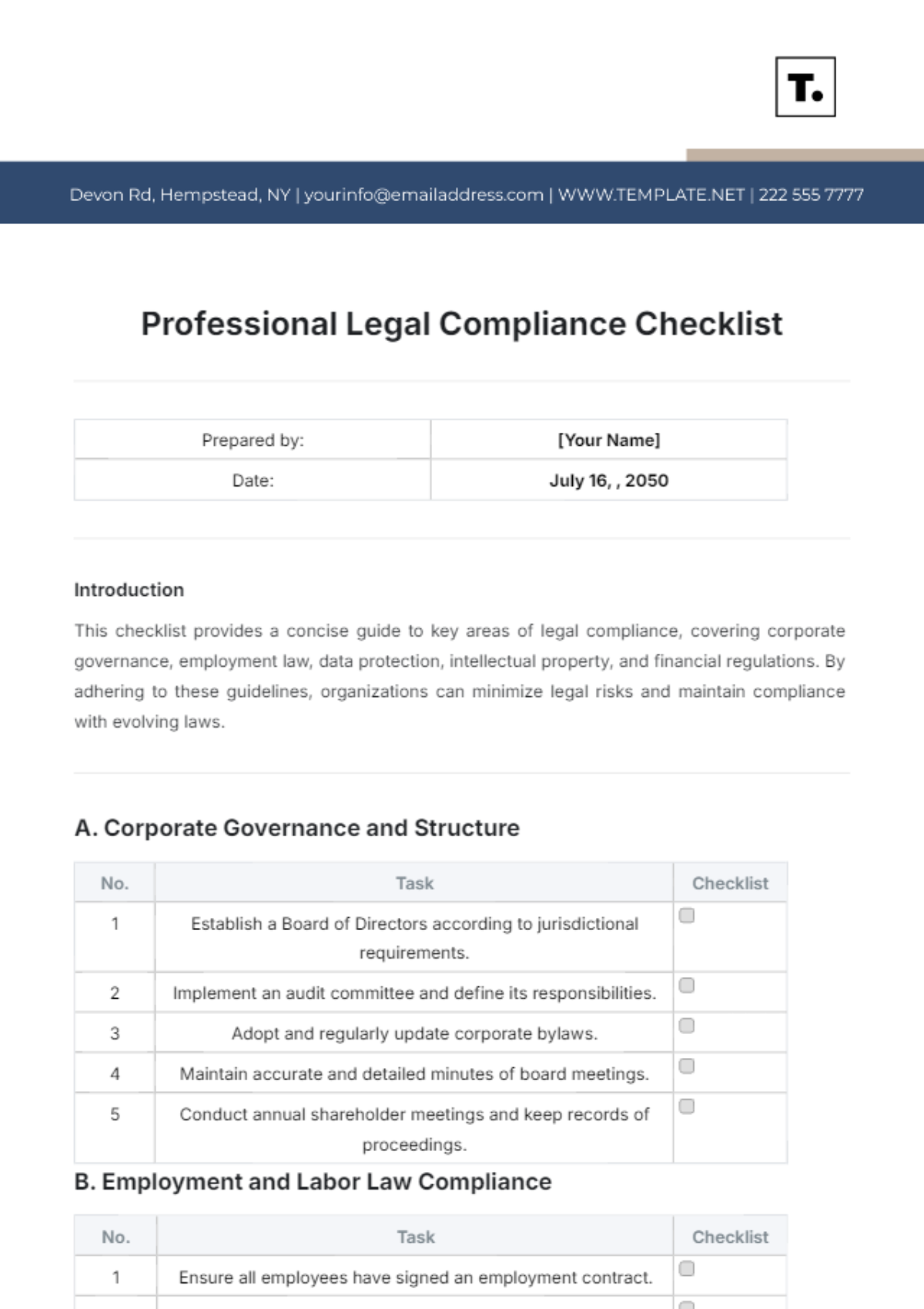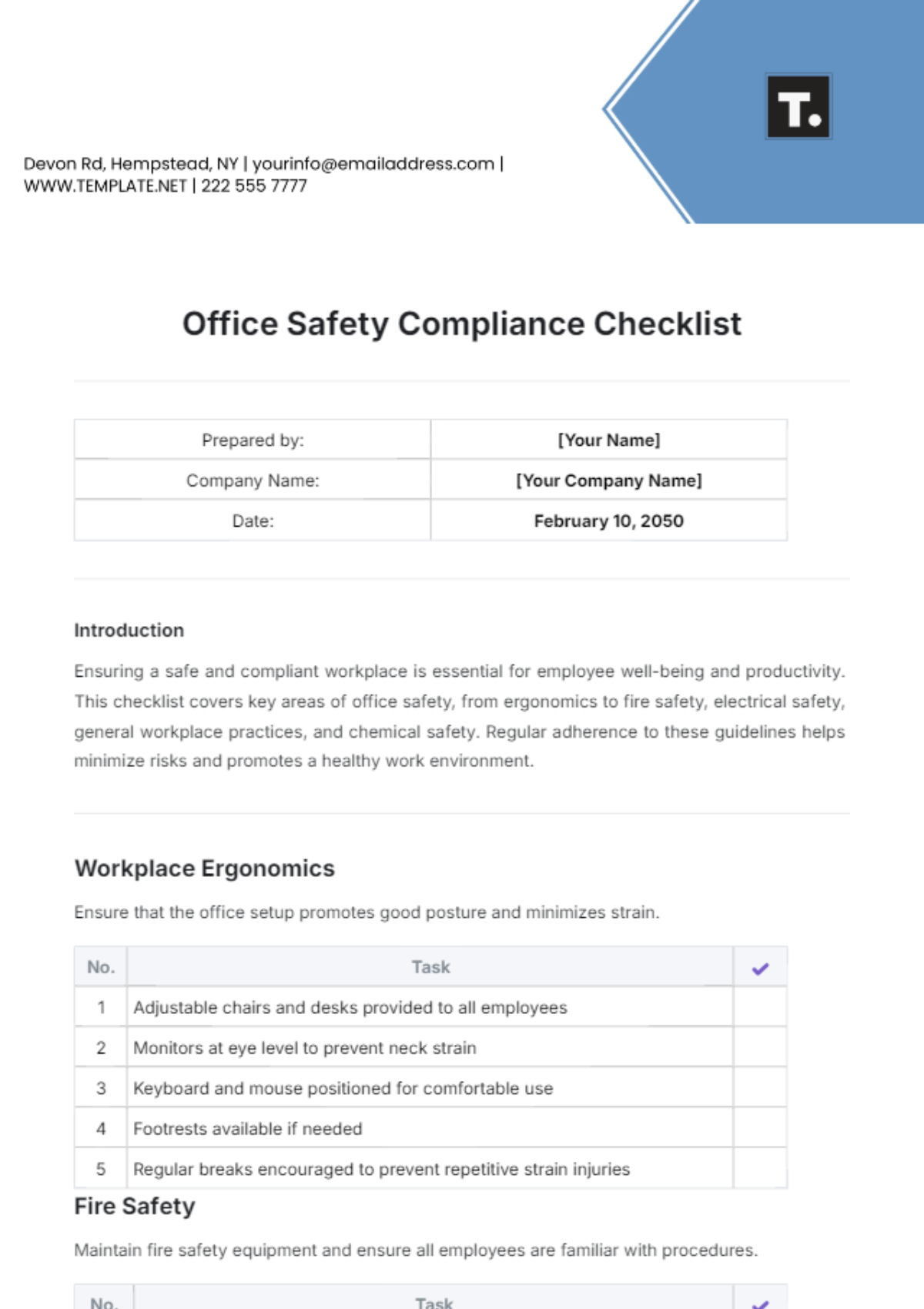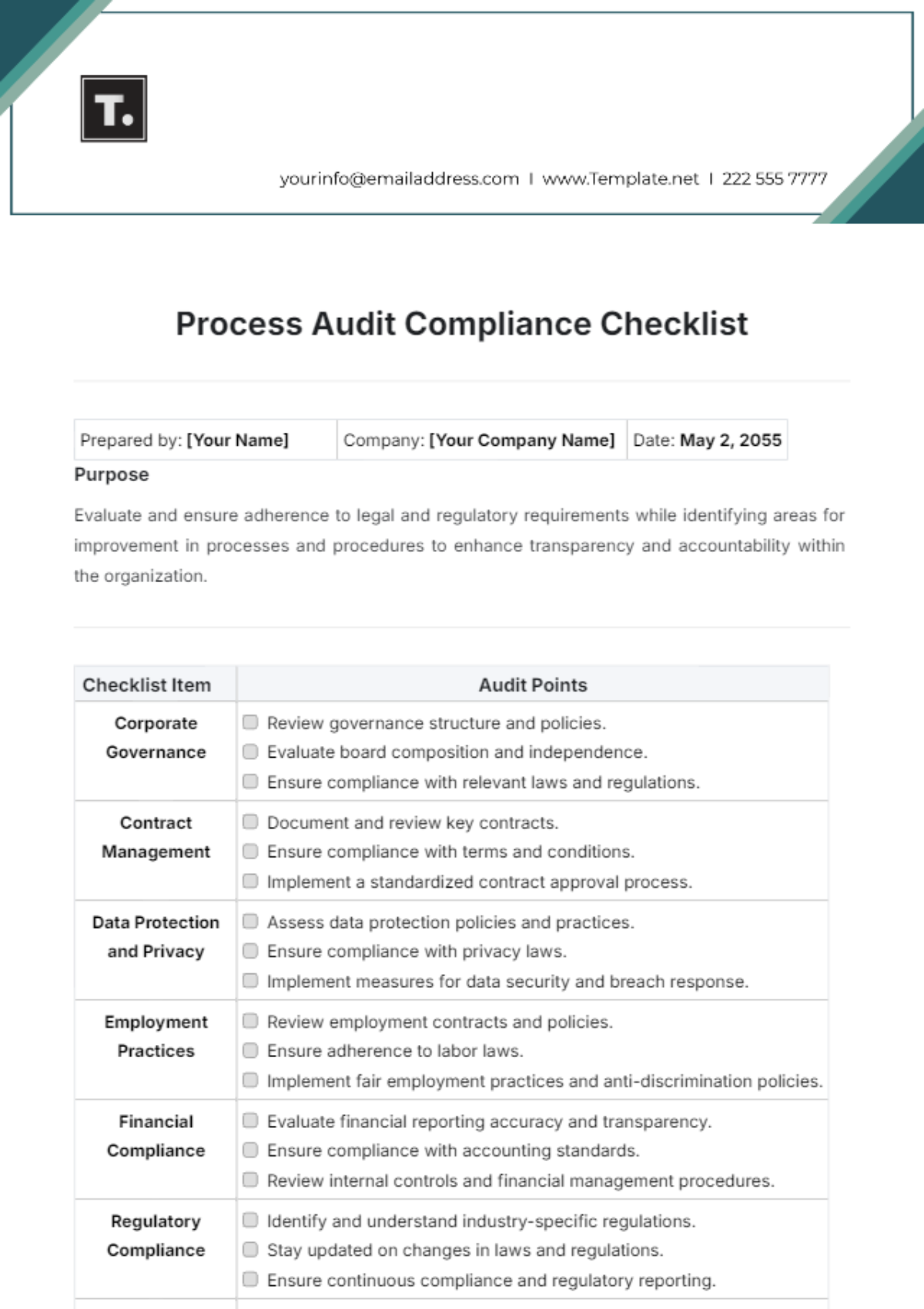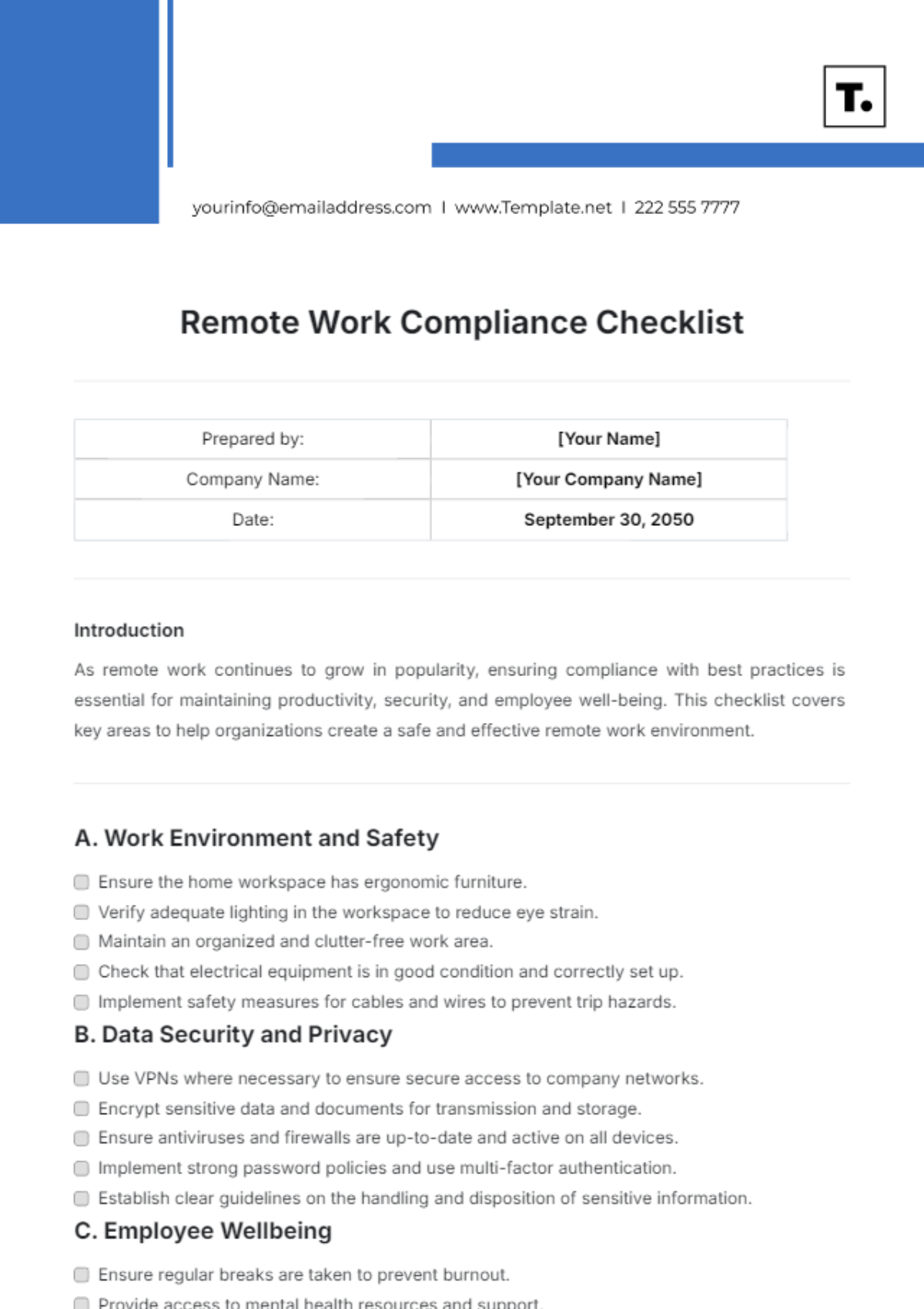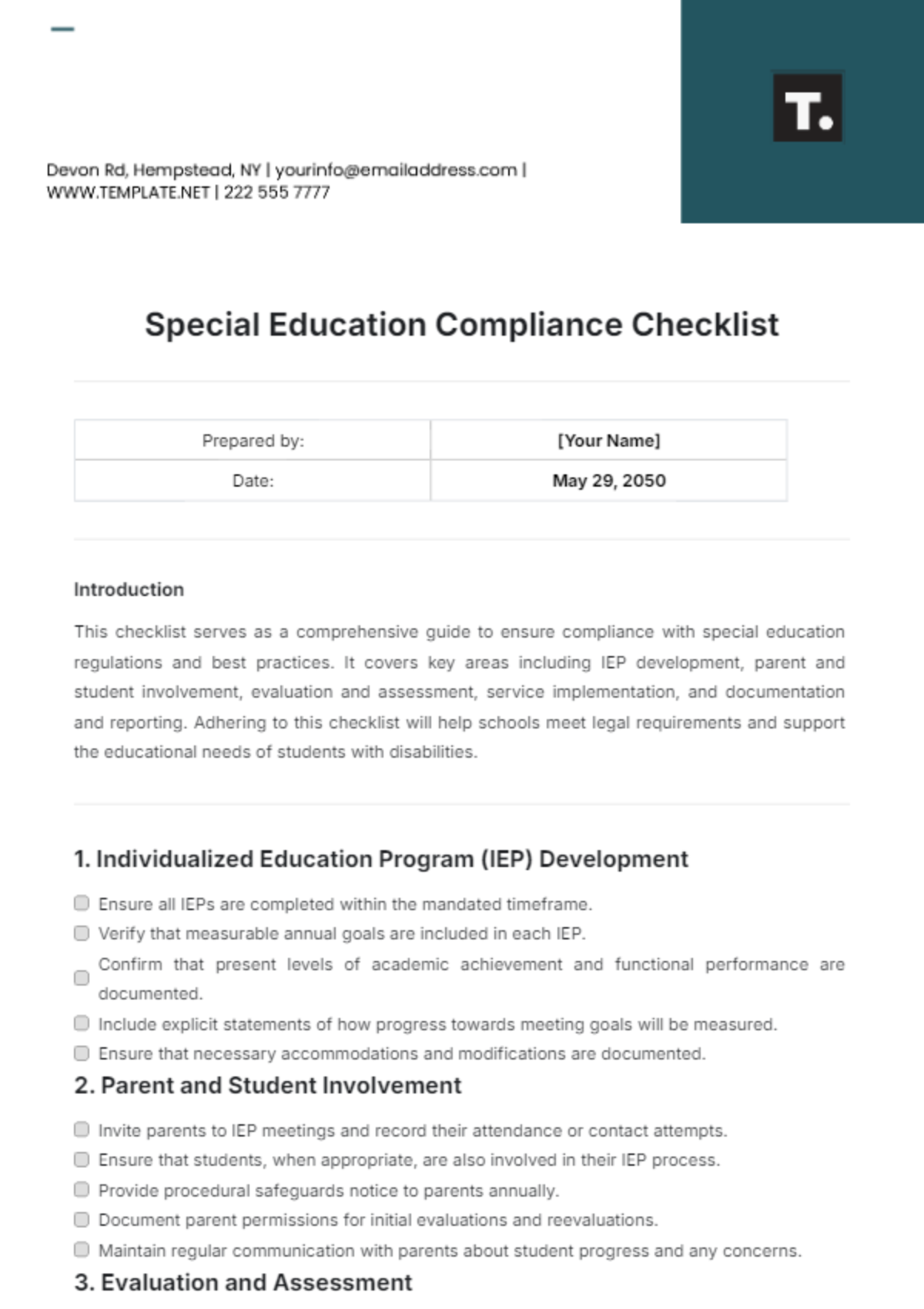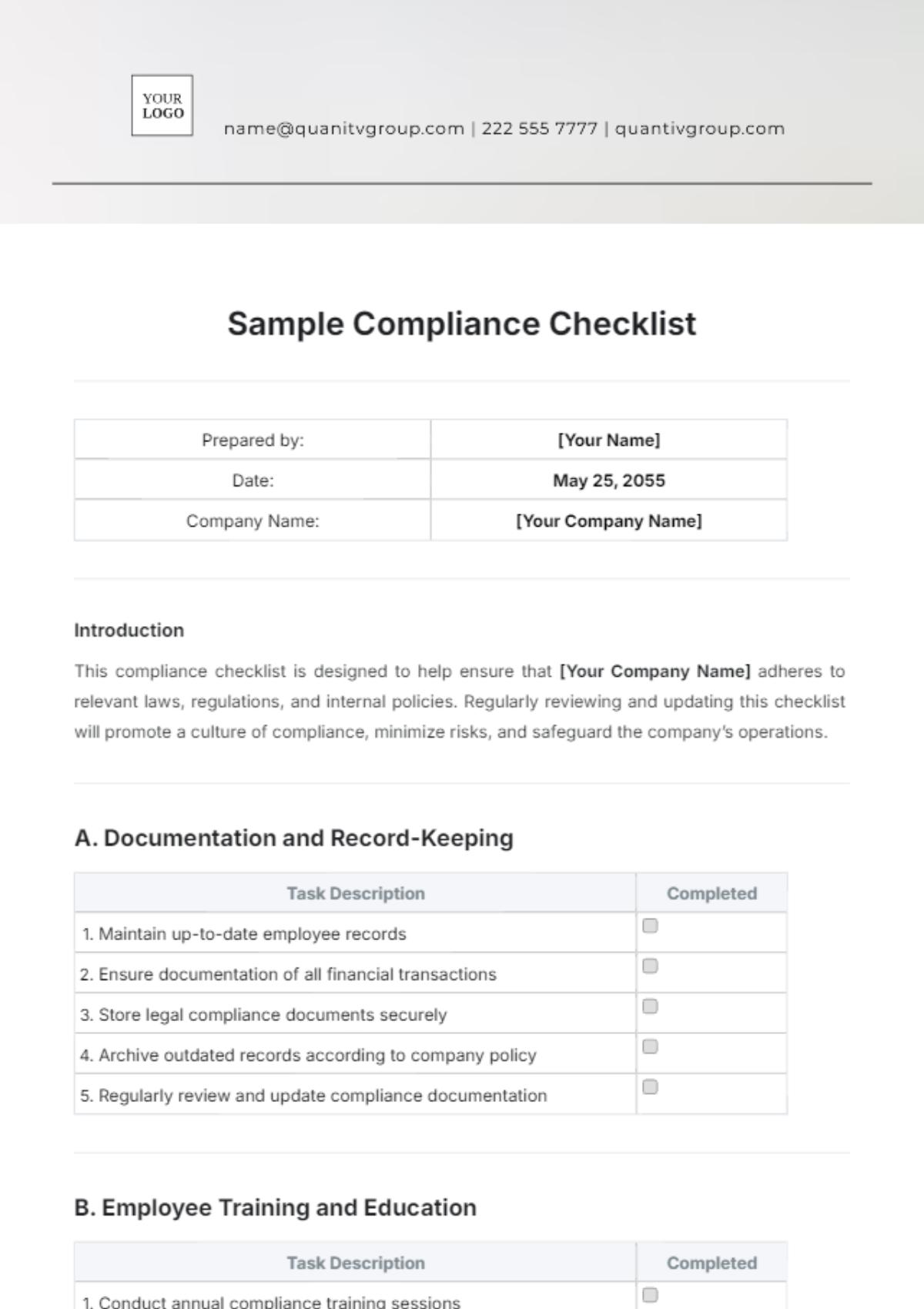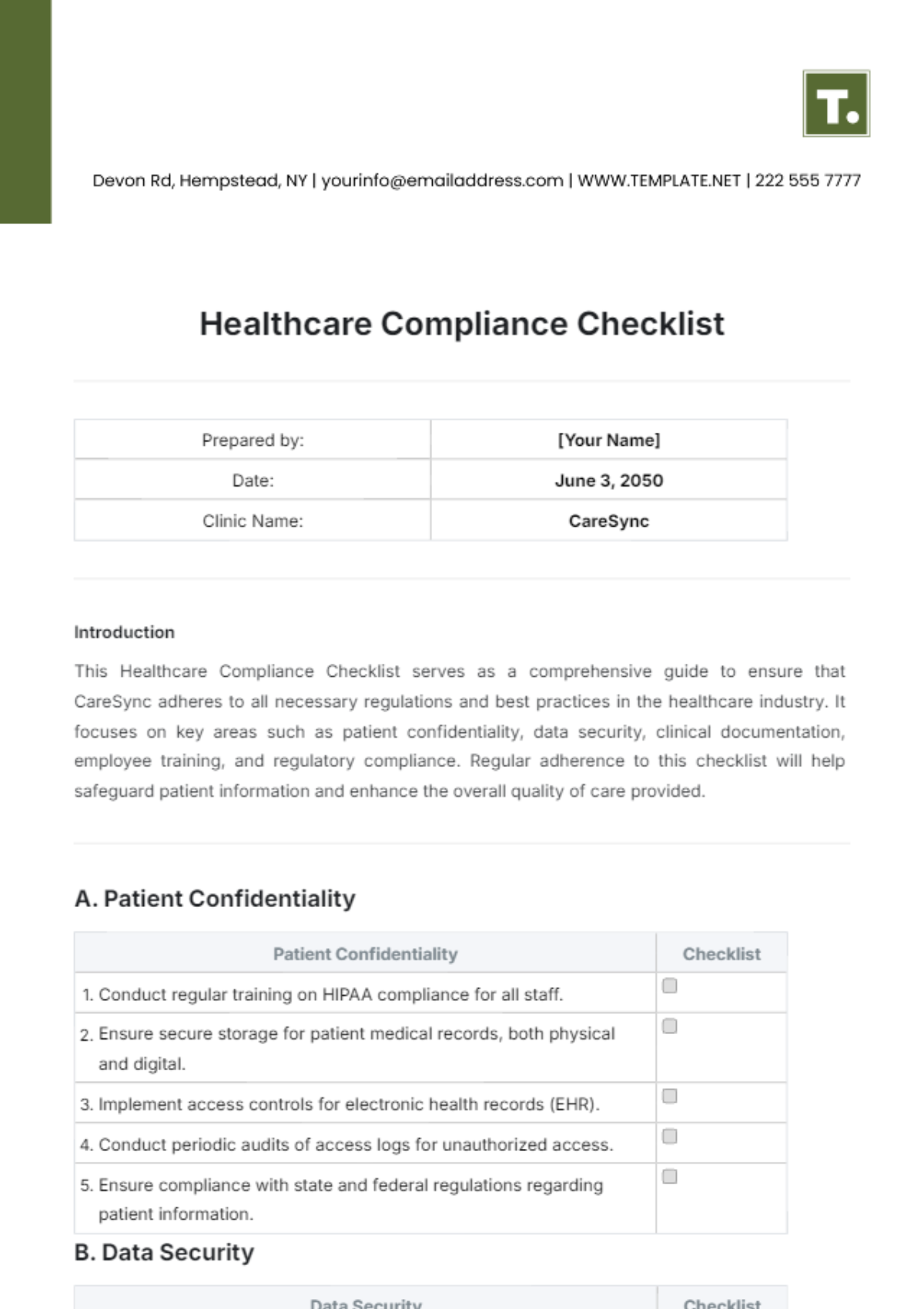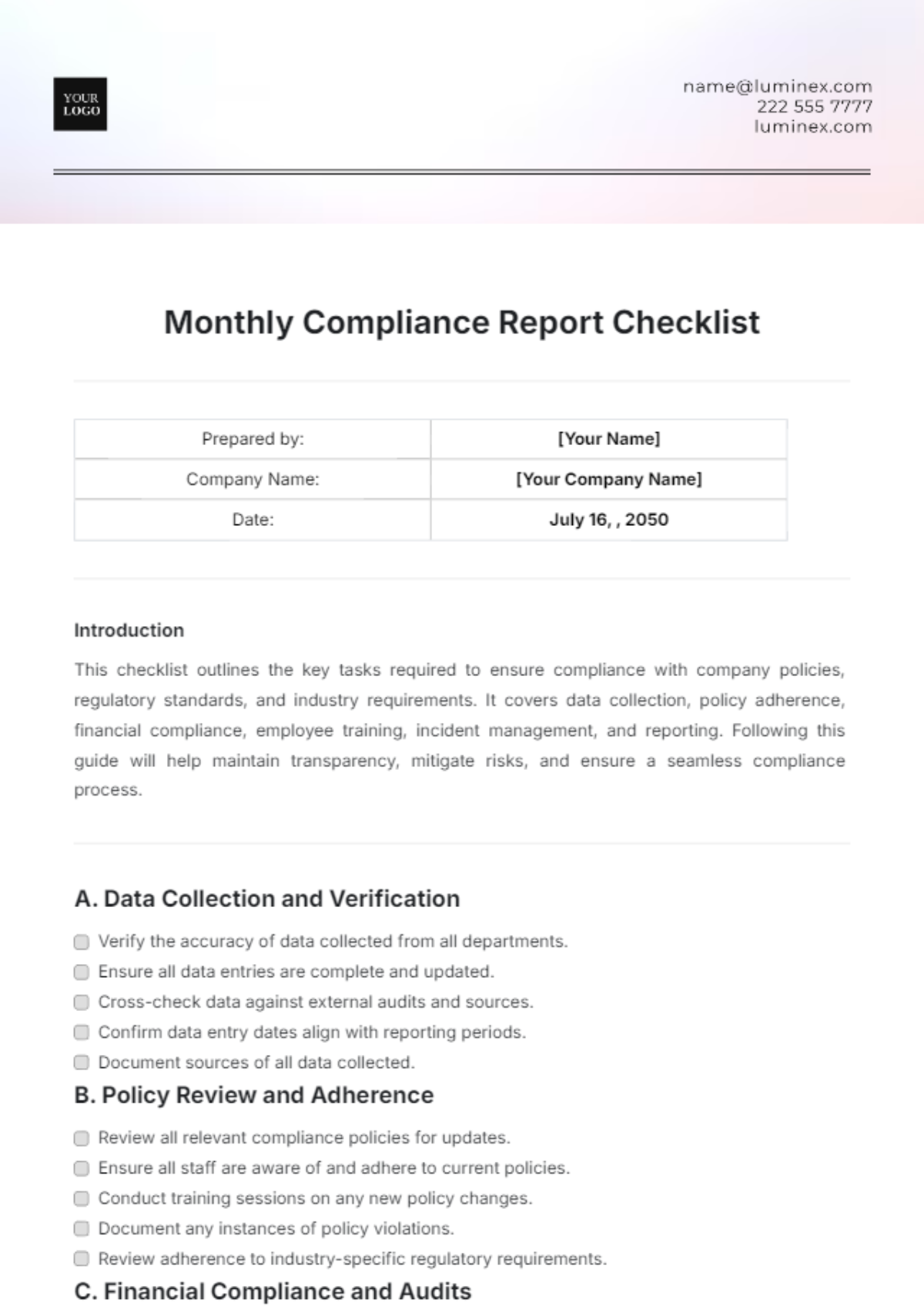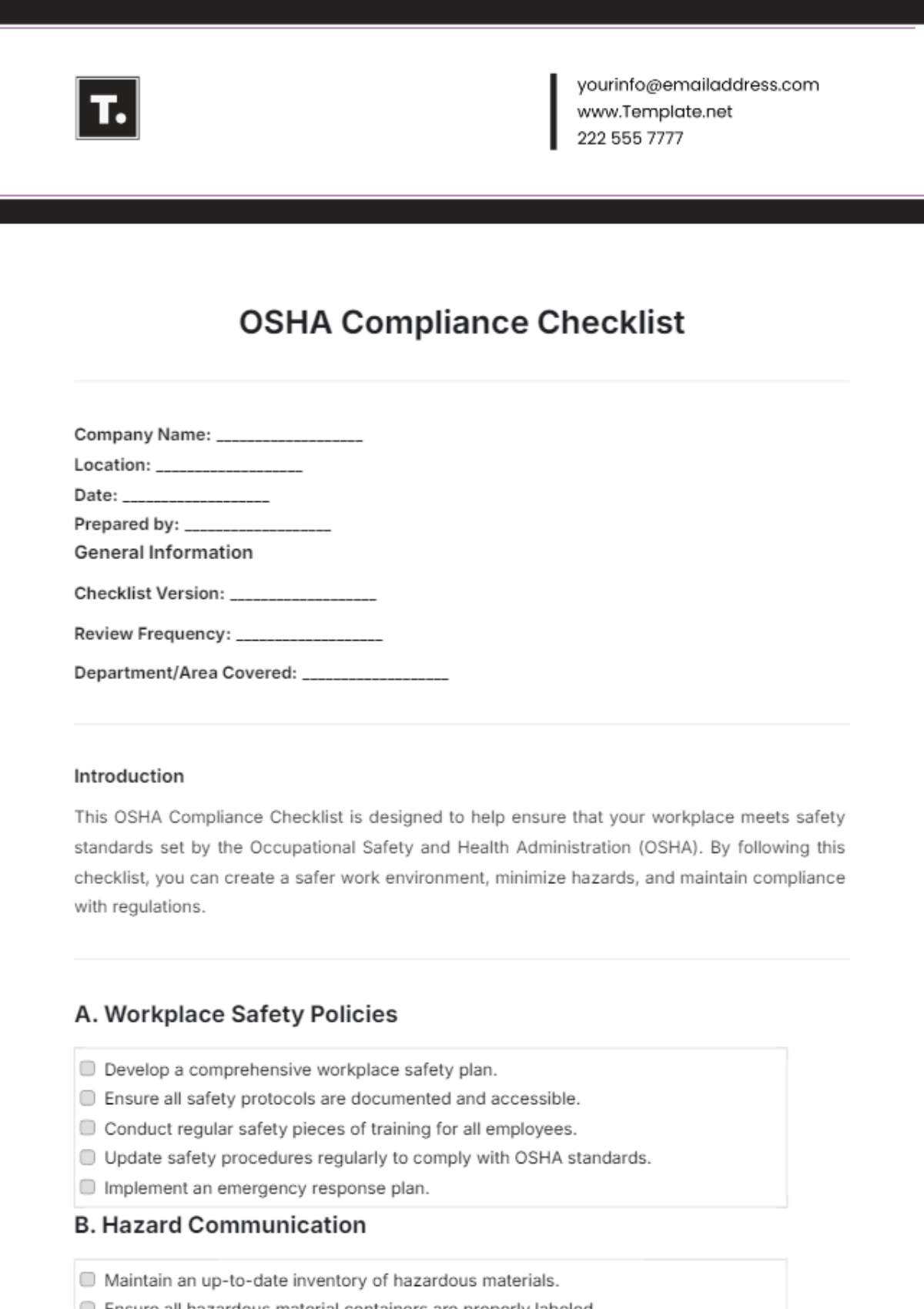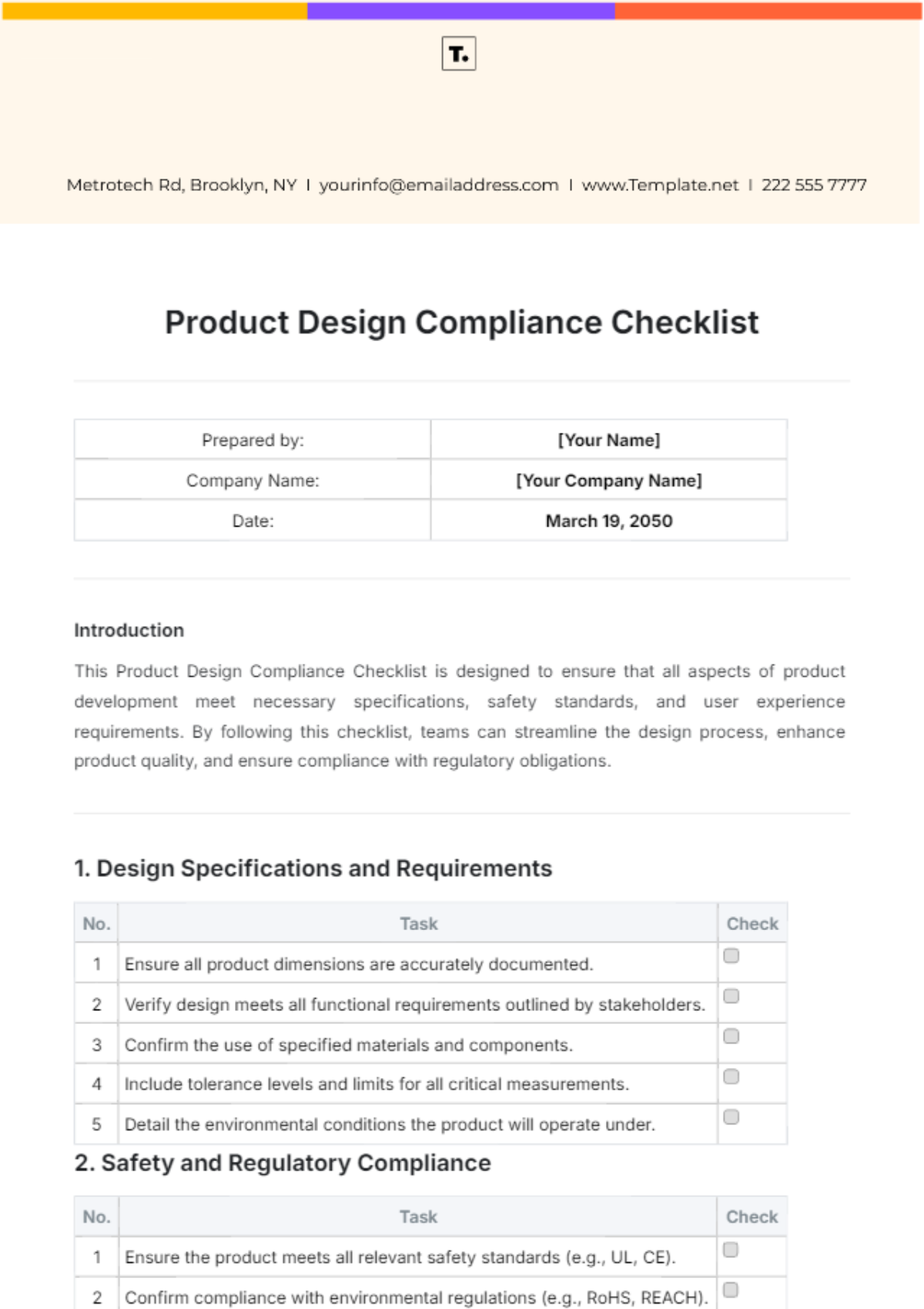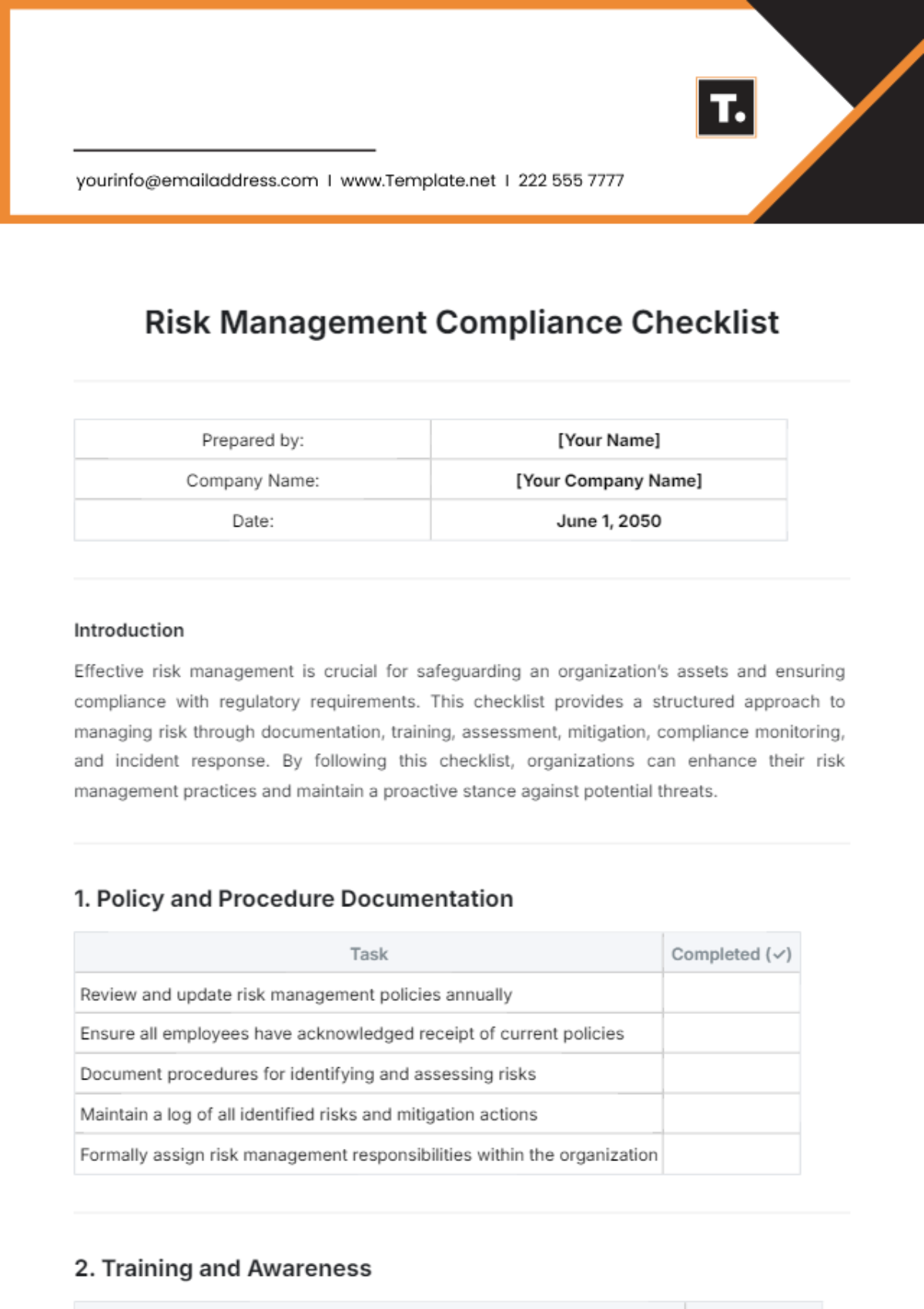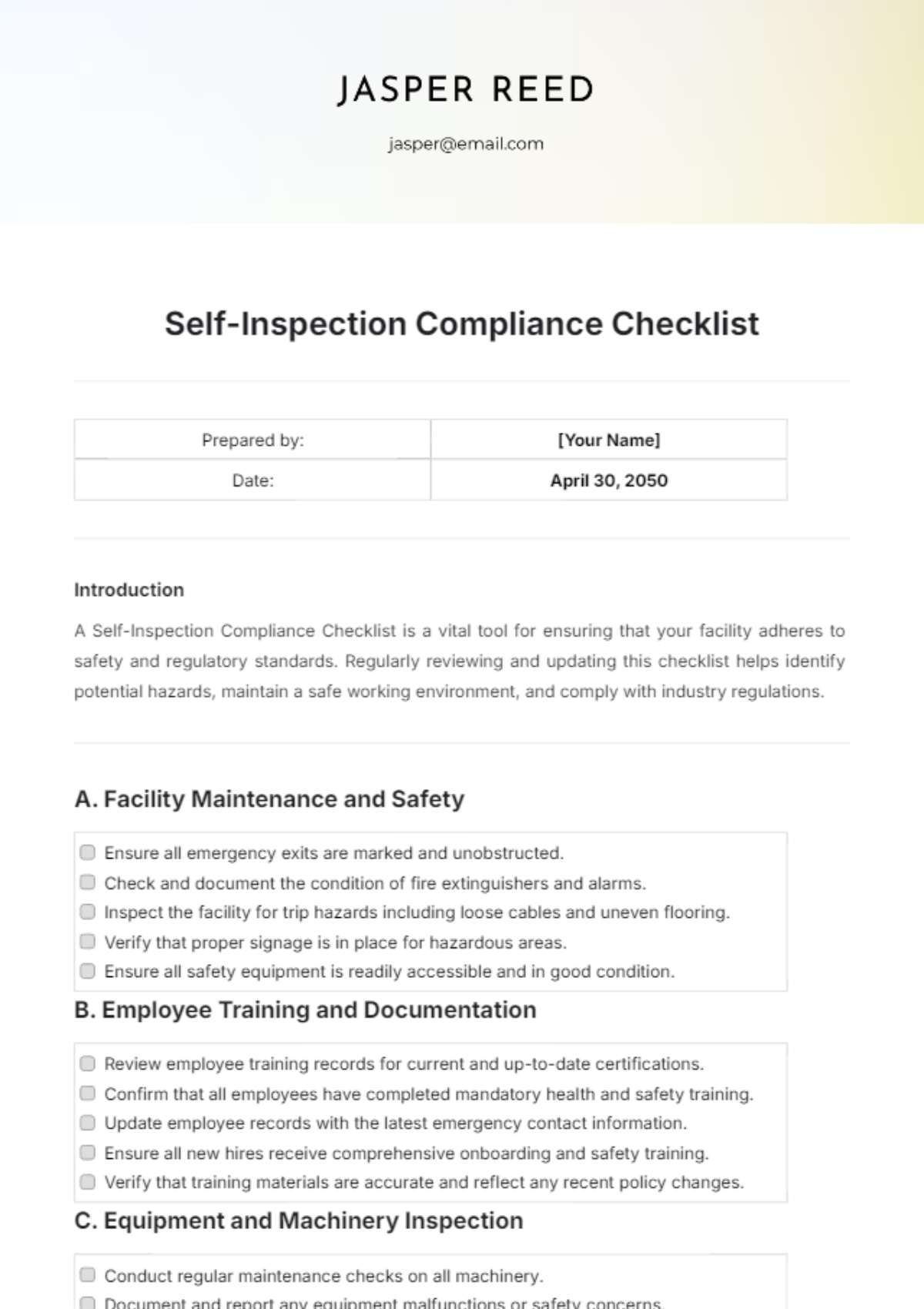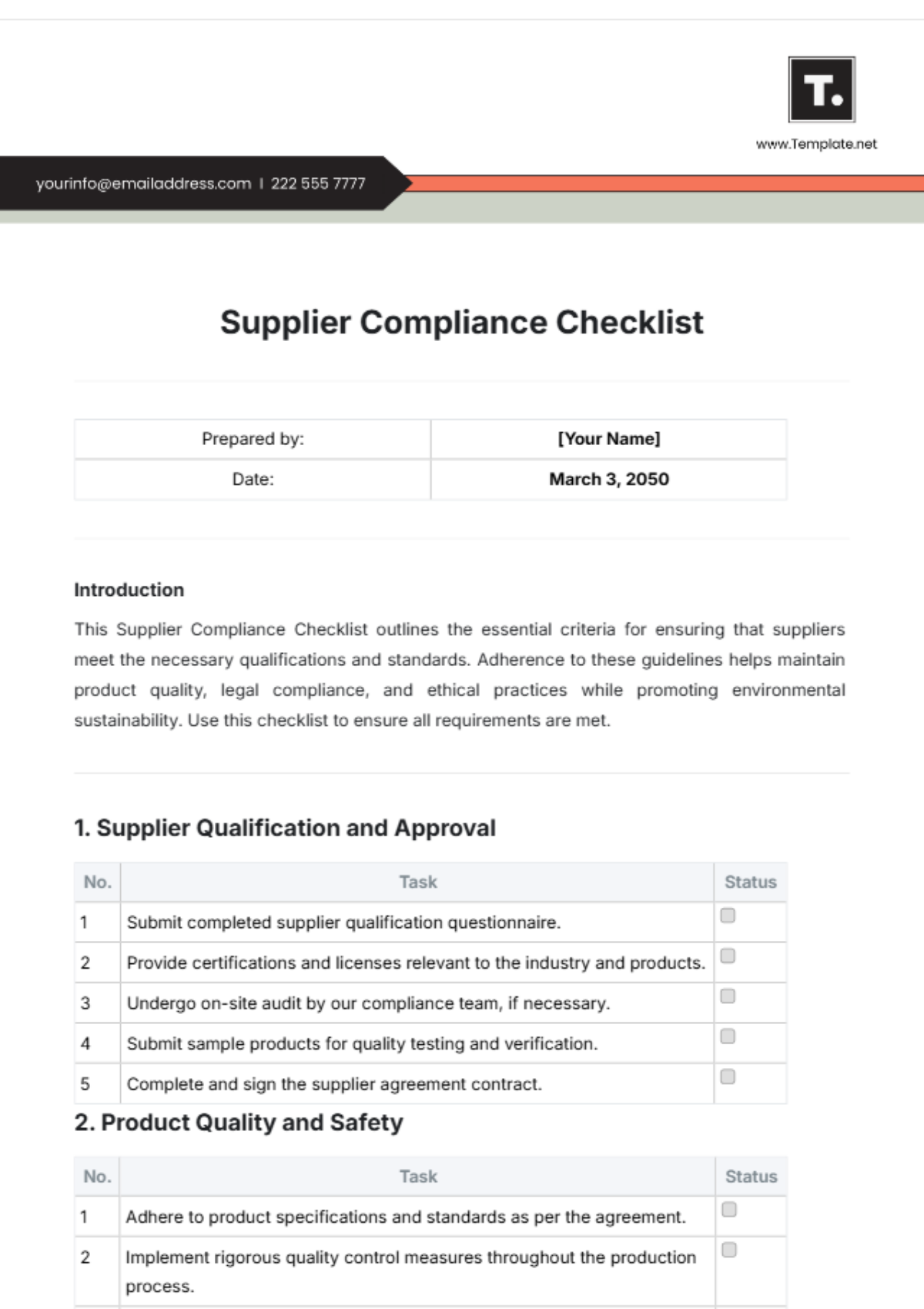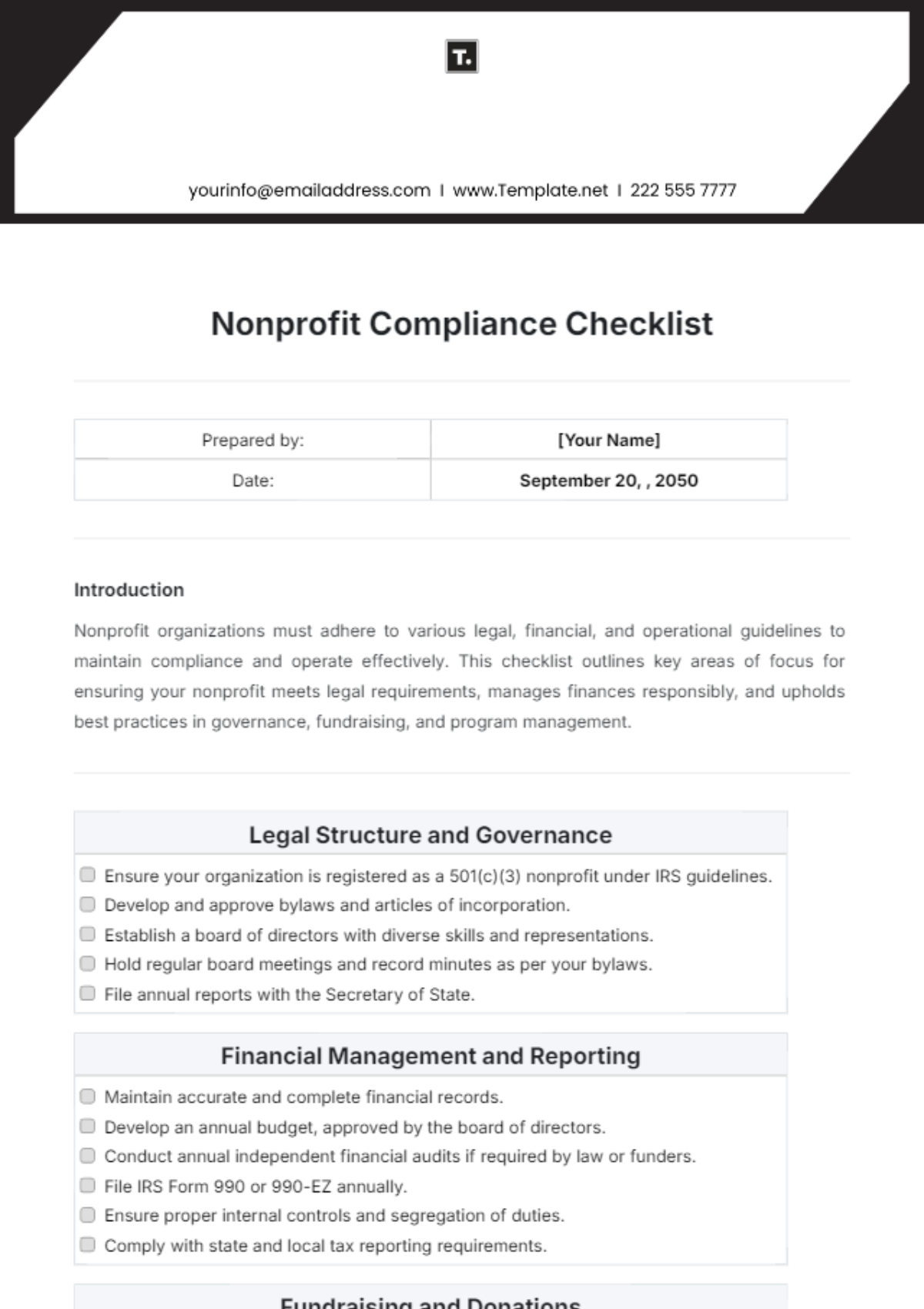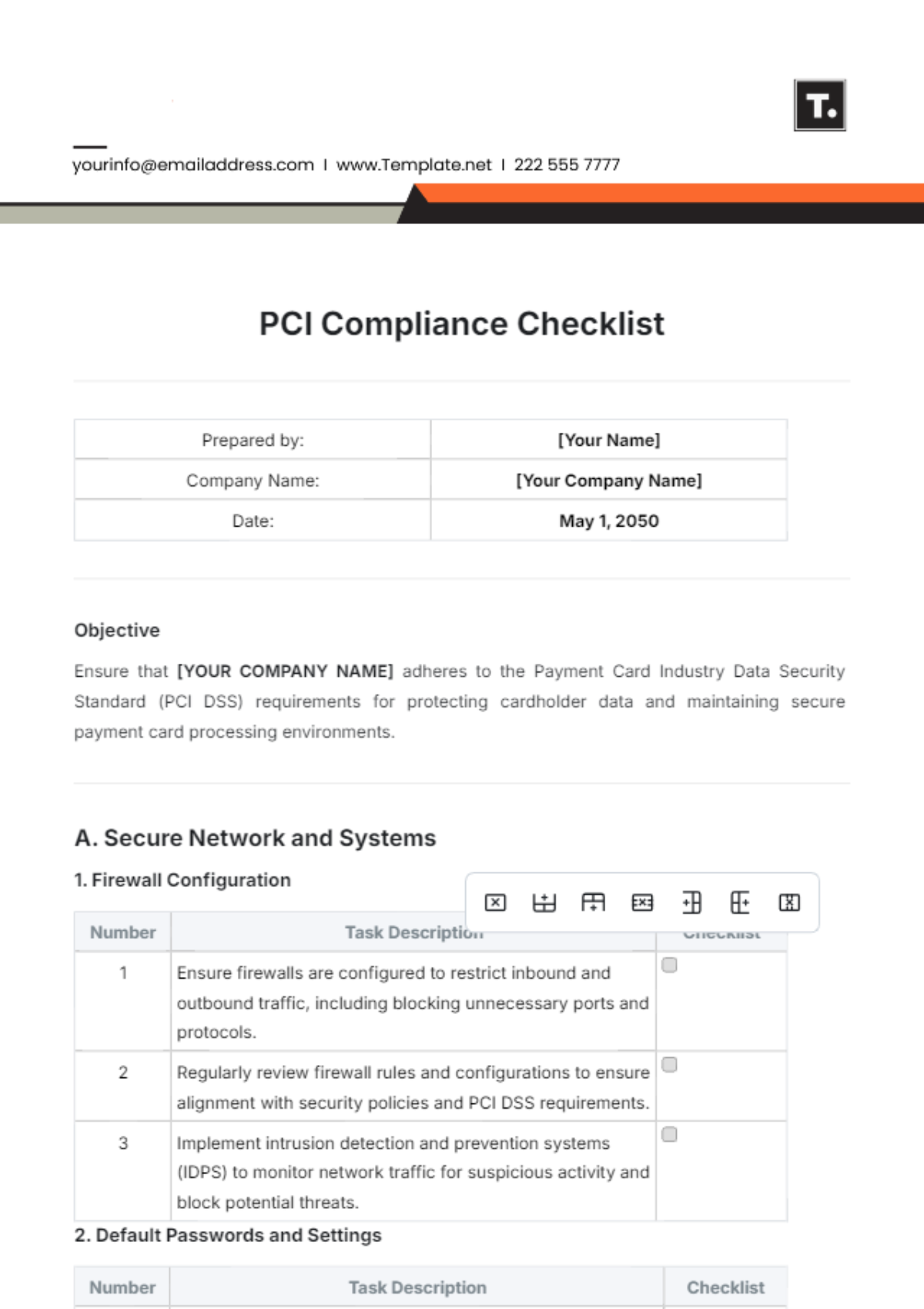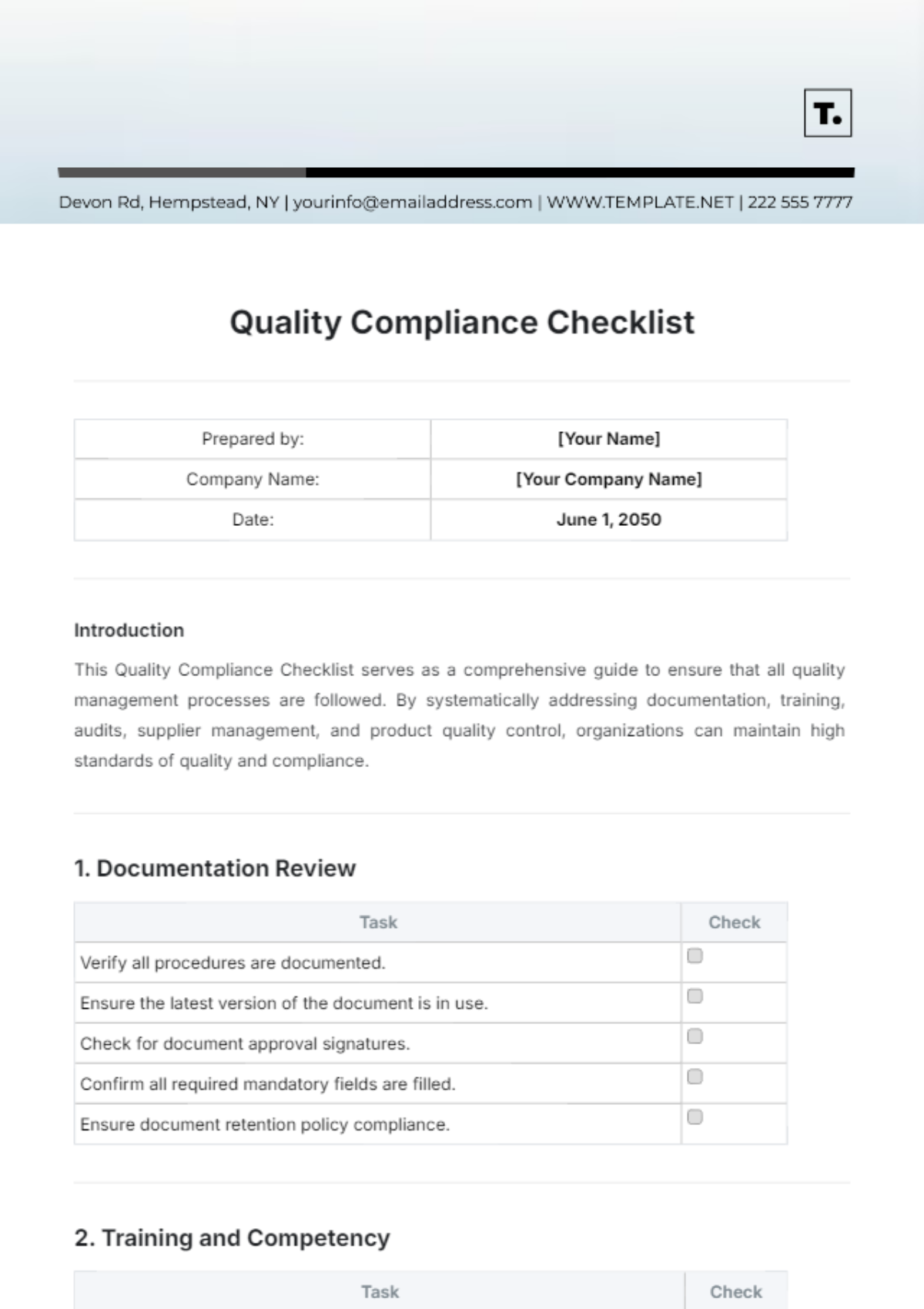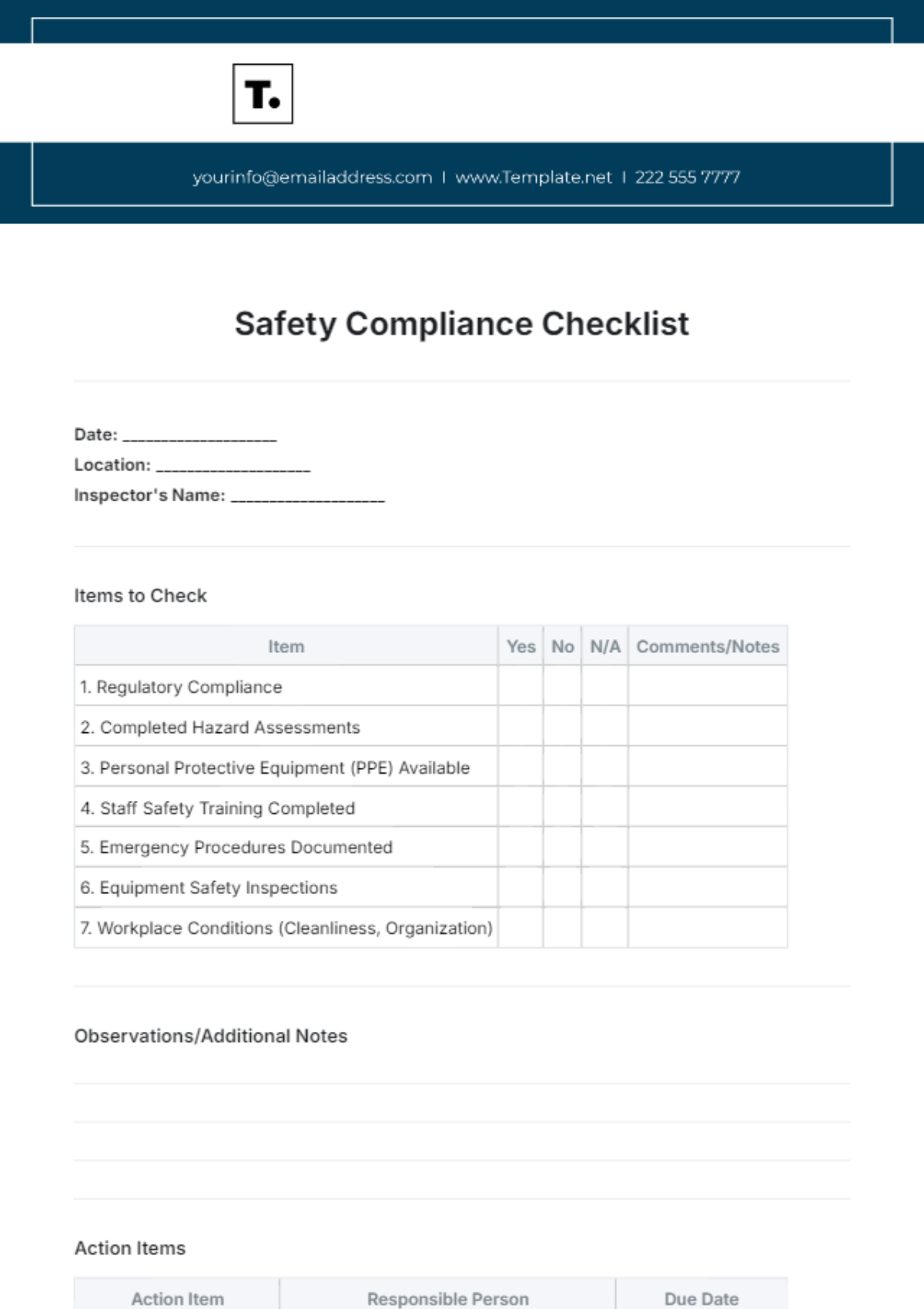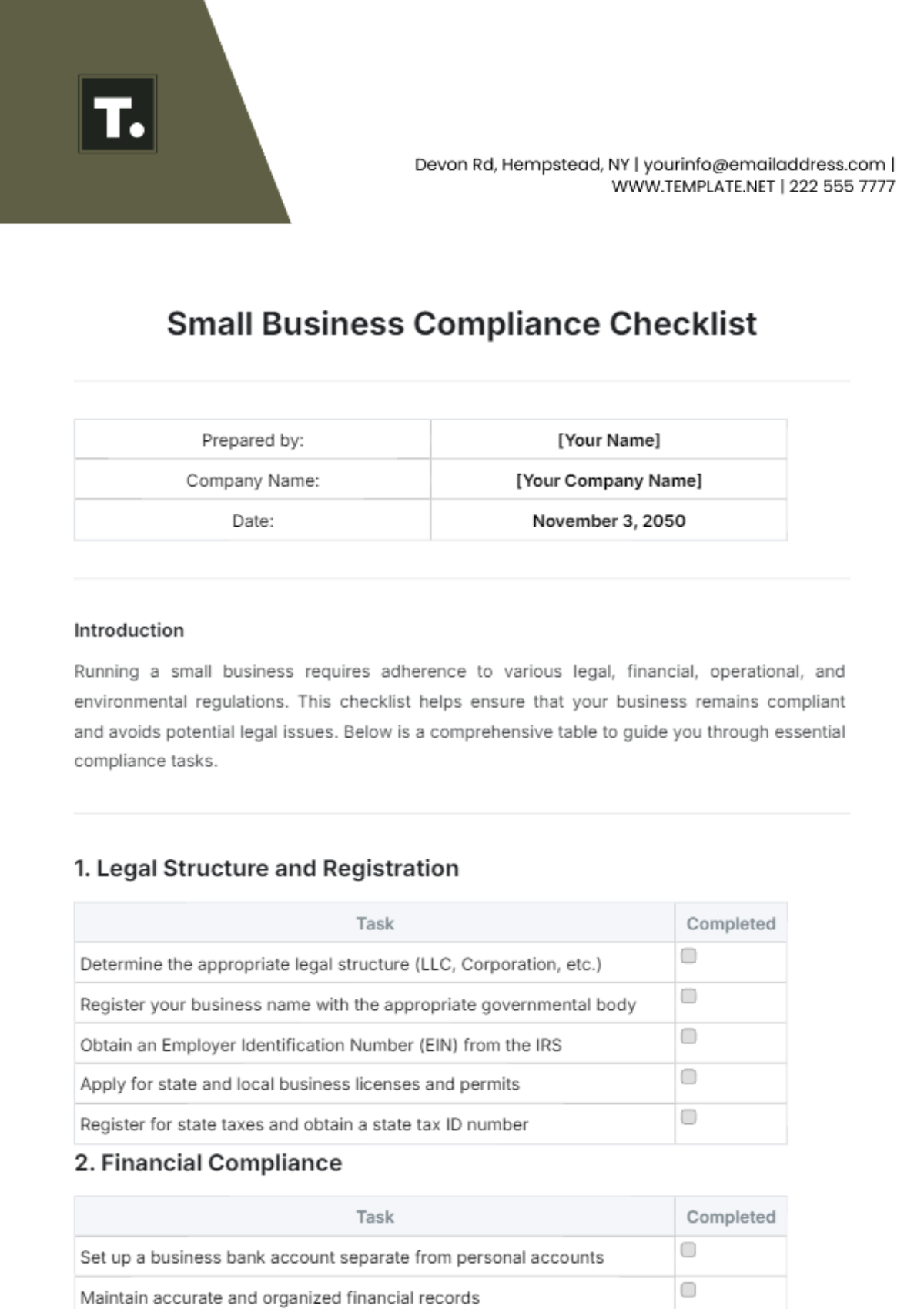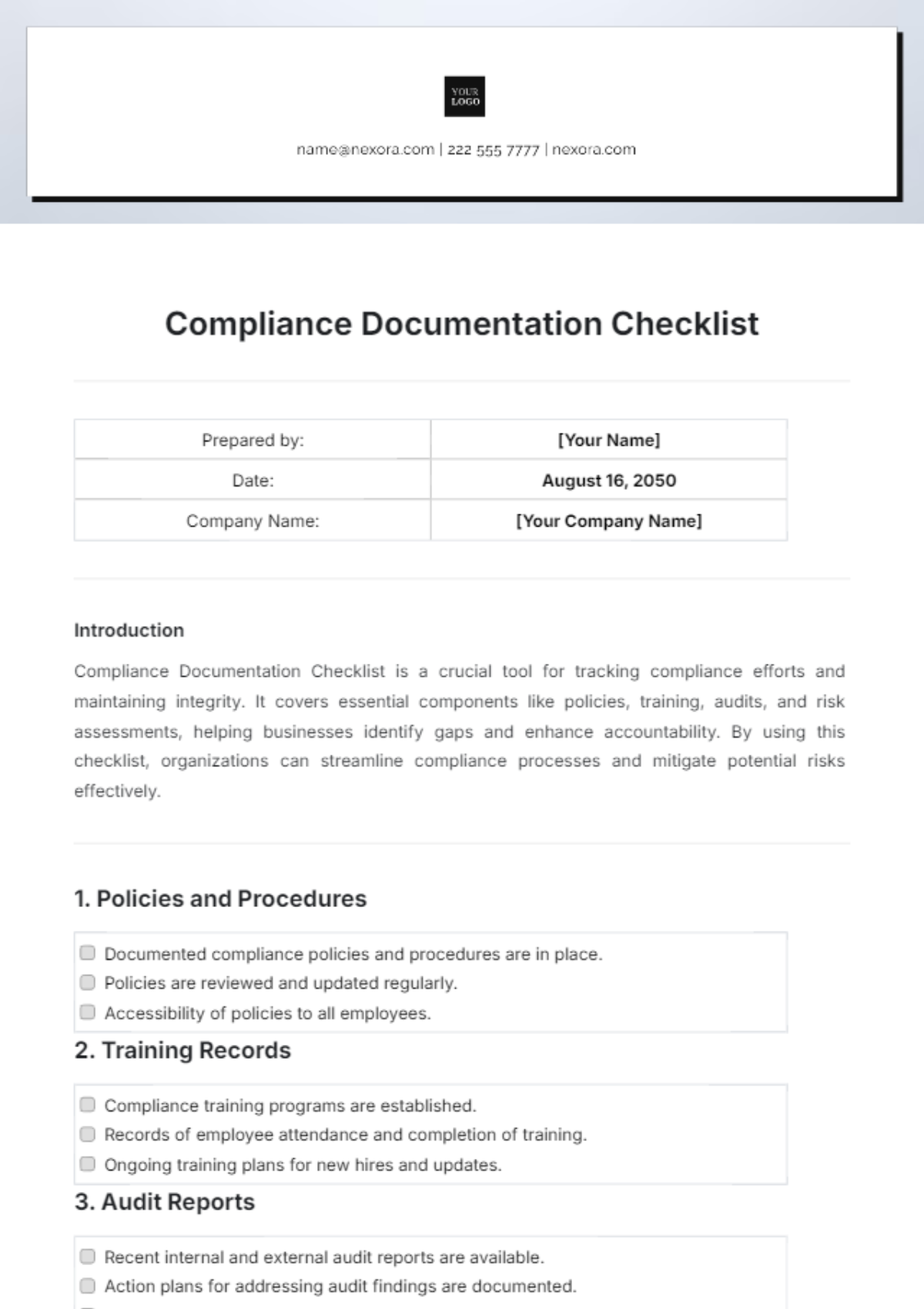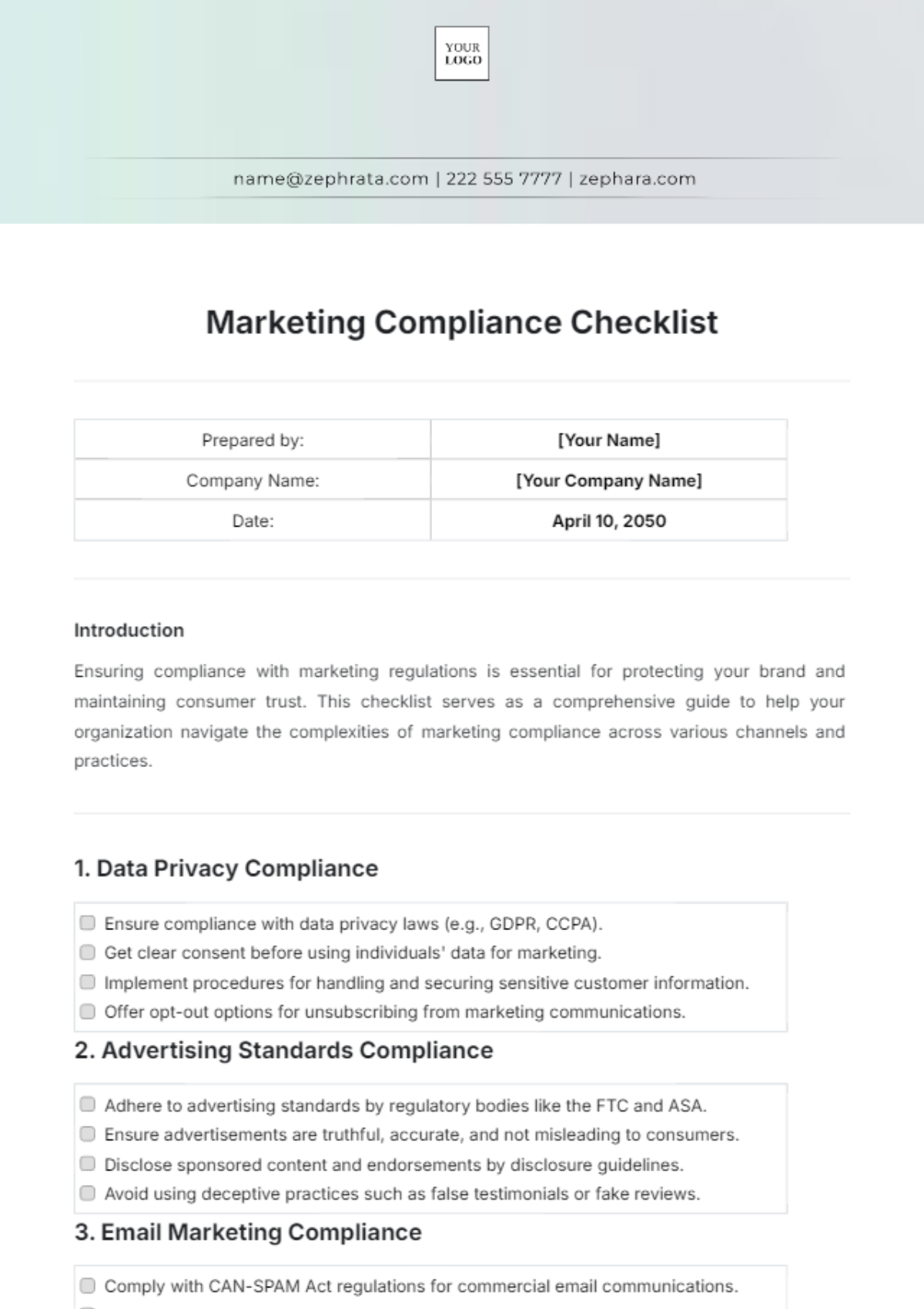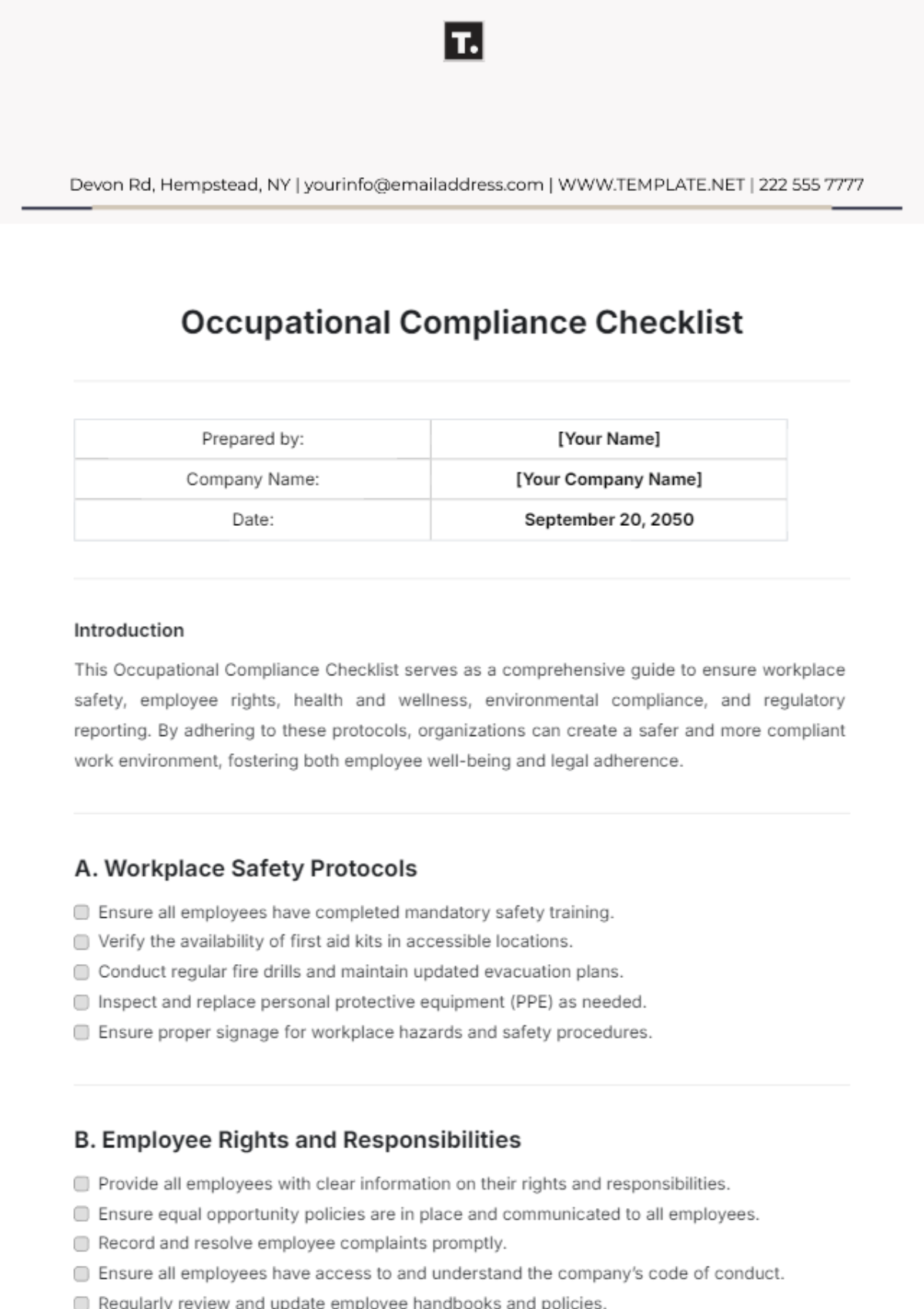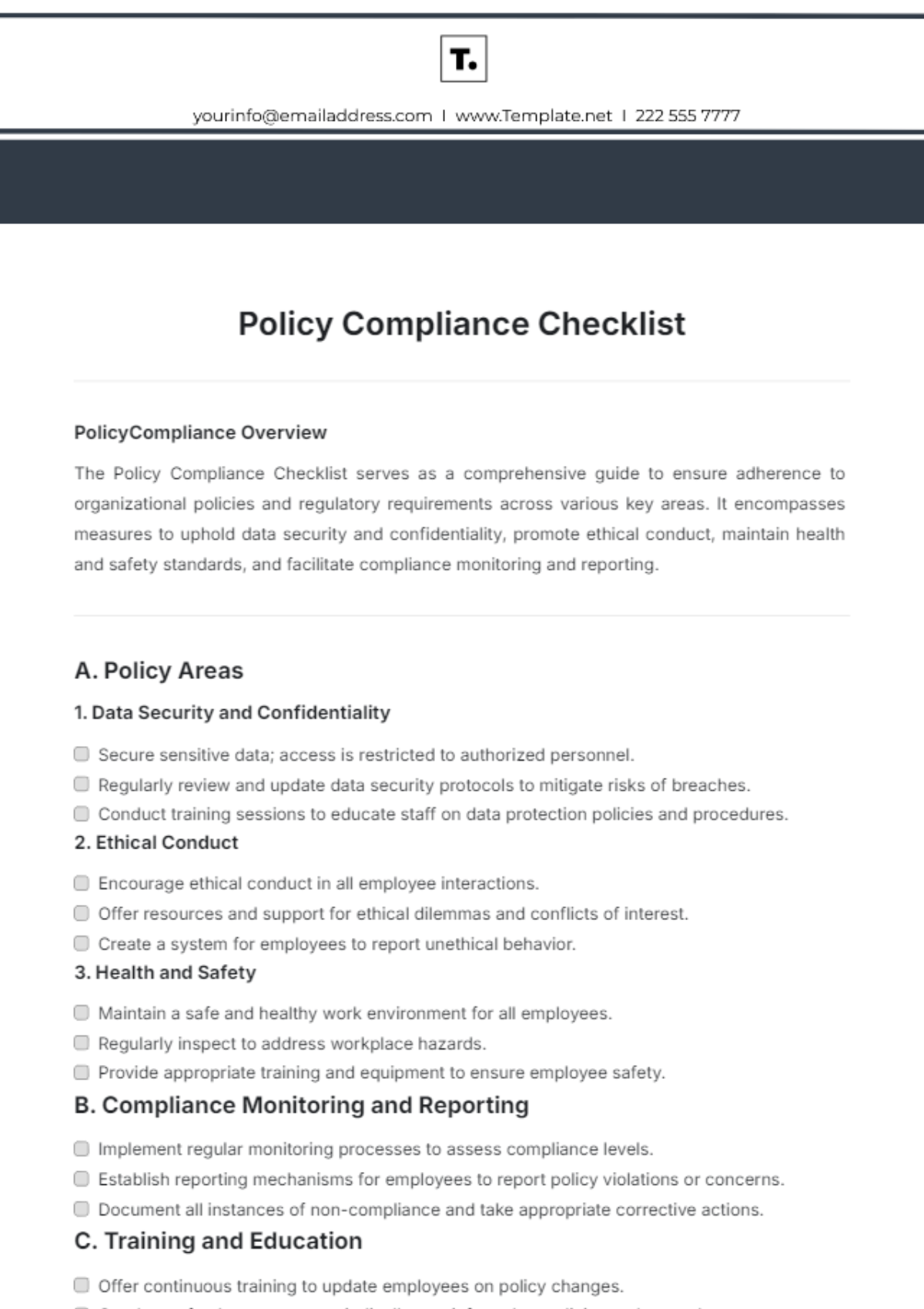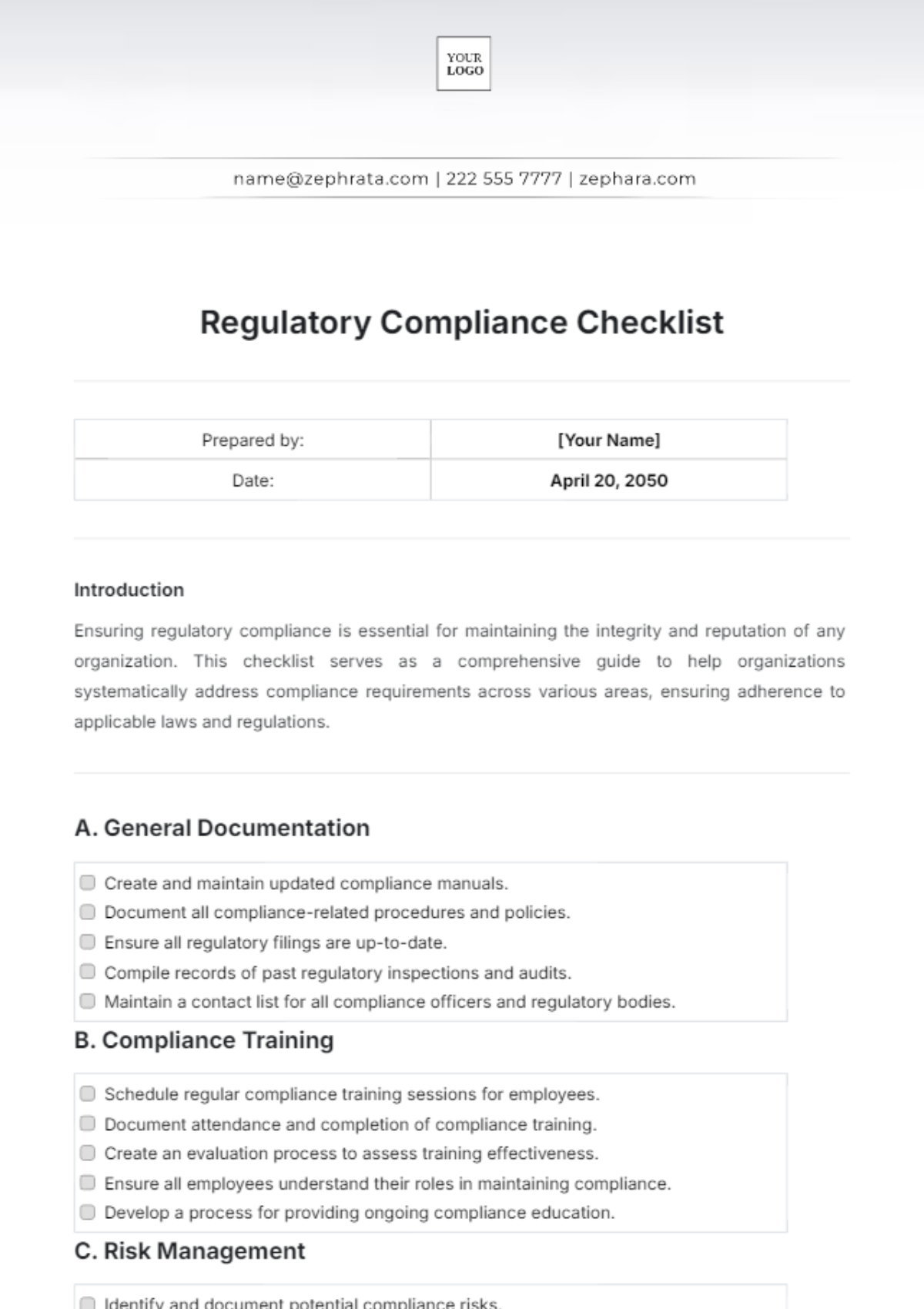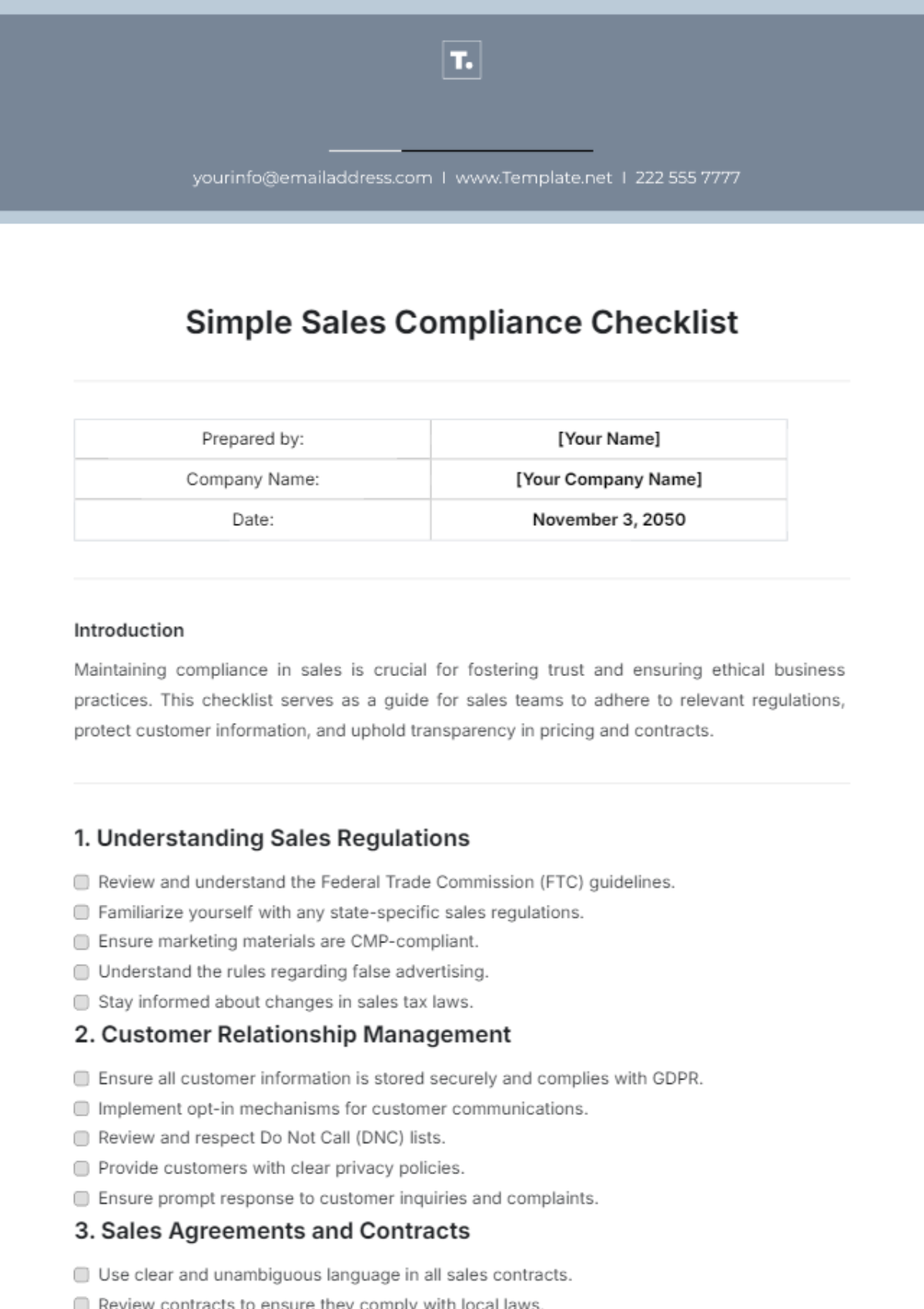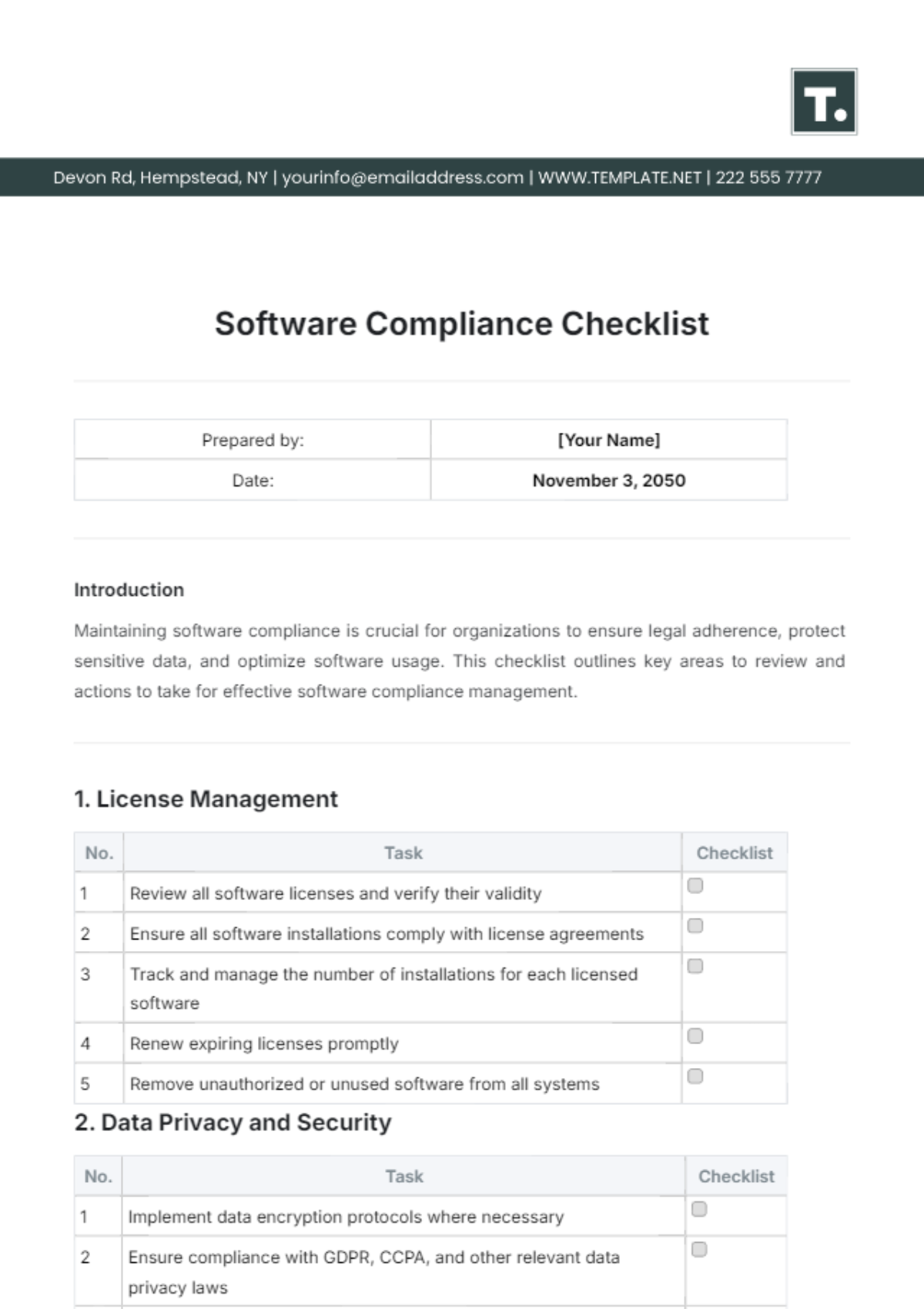FISMA Compliance Checklist
I. Overview
This FISMA Compliance Checklist offers a structured approach for government agencies to implement essential security controls and practices, aligning with the Federal Information Security Management Act (FISMA). With ten sections covering vital areas like governance, access control, incident response, and more, it provides a comprehensive framework to safeguard federal information systems effectively.
II. Governance and Risk Management
III. Access Control
IV. Awareness and Training
V. Security Assessment and Authorization
VI. Configuration Management
VII. Incident Response
VIII. Contingency Planning
IX. System and Communications Protection
X. Security Documentation and Reporting
XI. Continuous Monitoring
XII. Signature
I have reviewed and verified the implementation of the security controls and best practices outlined in this FISMA Compliance Checklist for Agency/Organization. I confirm that all necessary measures have been taken to protect federal information systems from cybersecurity threats and ensure compliance with FISMA requirements

[ORGANIZATION]
Date: ______________________________
Compliance Templates @ Template.net
